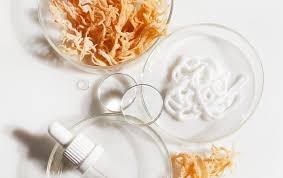In the field of cosmetics, Creativity and innovation are not required; however, compliance with regulations is required. With the FDA intensifying enforcement and the introduction of new laws like MoCRA, the Modernization of Cosmetics Regulation Act (MoCRA), Beauty brands should be aware of the latest developments to stay fully compliant and in the market.
When it comes to launching a new product or creating your brand, you need to know the FDA’s responsibilities and guidelines. Staying ahead of the trend requires being aware of these things.
Understanding the FDA’s Role in the Beauty Industry
The U.S. Food & Drug Administration (FDA) regulates cosmetics under the Federal Food, Drug, and Cosmetic Act (FD&C Act). However, it’s crucial to know the difference between cosmetics and drugs
Cosmetics are items that aim to clean, beautify, make you look attractive, or change the appearance (e.g., moisturizing creams and lipsticks).
In addition to treating or preventing illness, drugs may alter the structure and function of the body (e.g., treating acne, shampoos for dandruff, anti-aging serums claiming to “reverse wrinkles”).
A product marketed as a medication, even if it is sold in a beauty aisle, may be viewed that way if it makes therapeutic claims, like “heals eczema” or “increases collagen production”. There is an important distinction that affects everything from the way your product is evaluated to how it is classified.
Since the Modernization of Cosmetics Regulation Act (MoCRA), remaining compliant with FDA regulations has become ever more essential for beauty brands hoping to thrive in the United States market.
A key aspect of this process is completing the US FDA MoCRA Cosmetics Registration; this involves registering facilities, listing products, and providing safety documentation – prioritizing this registration helps brands both avoid legal pitfalls as well as position themselves as trustworthy market players in an increasingly competitive industry.
Labeling Requirements: What Must Be on the Label
The proper cosmetic labeling isn’t only about the brand; it’s also a legal obligation. The FDA has strict guidelines on what should appear on your product’s label, for example:
Identity statement (what the product does)
Net volume of content (amount in the product)
Names and addresses of distributors, manufacturers, and packers
Ingredients listed in order of weight using INCI (International Nomenclature for Cosmetic Ingredients) names
Notices of warning if appropriate (e.g., for products containing specific AHAs or aerosols)
Failure to comply with these standards can result in the product being branded as counterfeit and removed from the market.
Claims and Compliance: Words Matter
The language used in marketing is one of the most significant pitfalls for new brand names. Despite cosmetic claims such as “hydrates skin” or “adds shine,” claims such as “treats rosacea,” “boosts collagen production,” or “reduces inflammation” can land your product in the drug category.
Do not use claims that resemble drugs unless you’re prepared to undergo the drug approval procedure. Make sure you only use the benefits that are legal for cosmetics, unless you’ve had a meeting with a regulated expert.
To safeguard your brand:
Check your product’s copy
Make sure you back up your claims by conducting proper tests
Partner with a manufacturer or consultant who can understand compliance language.
MoCRA: The New Cosmetic Regulation Era
The Modernization of Cosmetics Regulation Act (MoCRA), which was enacted into law in the month of December 2022, is a significant change in the way that the FDA supervises cosmetics. The first time in history, cosmetics manufacturers must comply with certain regulations that were not previously to which were voluntary or were not strictly enforced.
Key Provisions Under MoCRA:
Facility Registration:
Manufacturing and processing facilities for cosmetics are now required to be registered by the FDA. This applies to both foreign and domestic manufacturing facilities that sell within the U.S.
Product Listings:
Every cosmetic product that is sold on the market must be regulated by the FDA, with key information such as the ingredients used and their intended usage.
Safety Substantiation:
A cosmetic brand must ensure that every product has adequate safety substantiation, meaning documented proof that it is safe to use under prescribed or customary conditions.
AER (Adverse Event Reporting):
The FDA must receive reports within 15 days of acute adverse events that cause serious harm. Six years are also required for brands to keep detailed documents.



